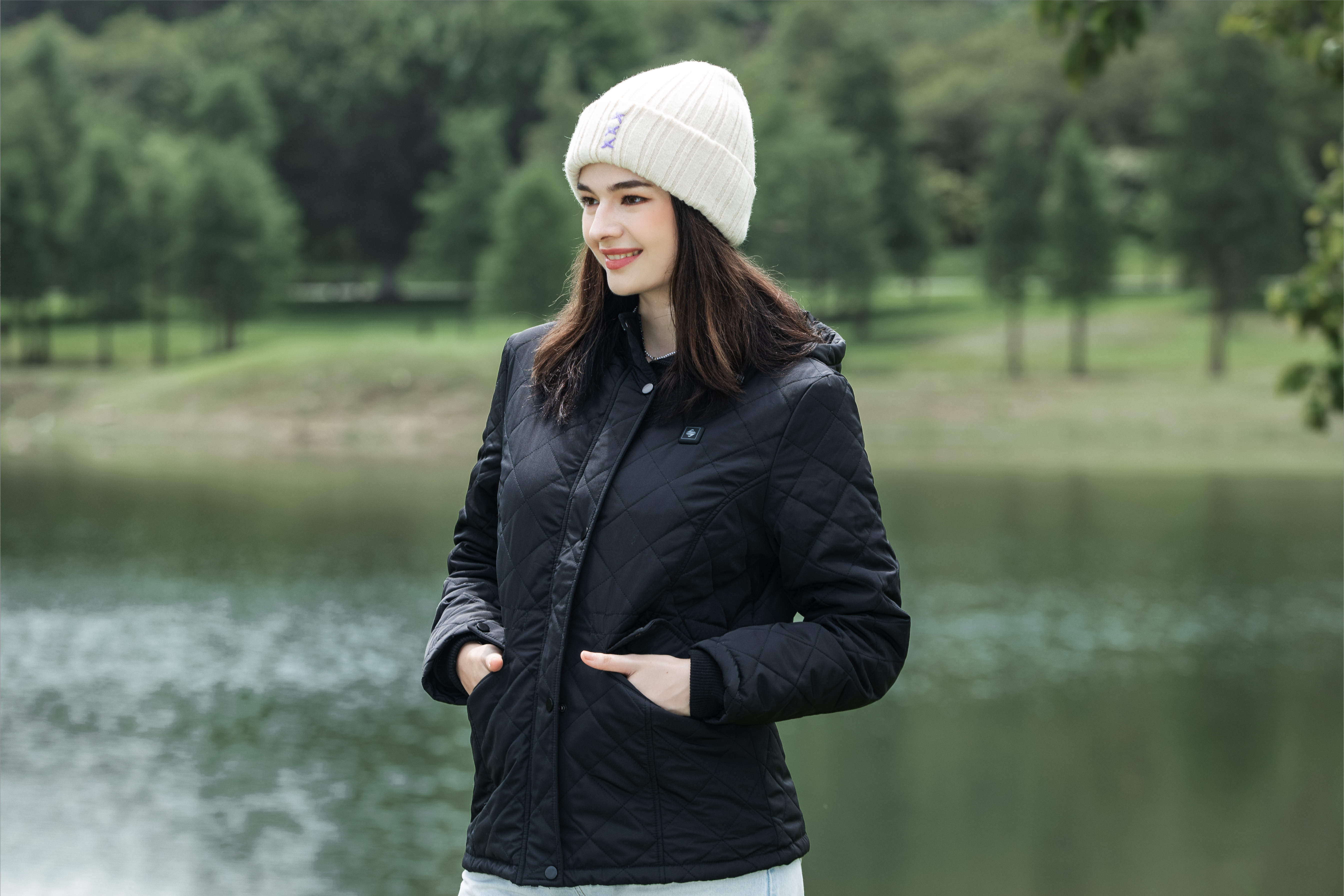What is the Best Power Bank for a Heated Vest?

Colder regions and weather come with their own set of challenges, and avoiding getting affected by the harsh weather is one of them. No thermal protection can lead to several health conditions and put the individual in jeopardy.
This is the reason, people in cold areas make use of heated clothing to gain instant warmth and benefit from its therapeutic effects. Heated vest, in this regard, are seen as a popular commodity and their market has flourished in recent times due to their frequent and wide use.
However, keeping the heated vest operating while you are busy with outdoor activities for longer periods can only be possible with a power bank. A portable heated vest is in demand as an efficient option for construction workers and other activities in freezing temperatures.
Within this concern, not all brands offer heated vests with long-standing battery packs. Choosing the right power bank for heated vests that has high thermal stability and lasts for long hours is integral. Without having to stay connected to the power outlet, SGKOW offers the best solution.
Their user-focused heated vest for men and women have high-quality power banks included. GaN chargers with rapid charging ability are offered in their service as well, which keep the battery pack in optimum condition for a long.
Modern times have led to advancements in power banks such as extended battery capacity, Gallium Nitride Chargers for fast charging, pass-through charging ability, and multi-device charging. To understand which power bank is ideal for you, we have crafted a detailed article covering all aspects of a power bank in detail.
Understanding Heated Vests
Being a modern clothing element employed in cold temperatures, heated vests are an integral part of many people’s lives in this era. Its technology has gained the top spot in clothing preference for subzero areas due to its many benefits. However, understanding its basics is the first step.
Heated Vest Technology
Heat conduction is the primary method of transferring warmth within a heated vest. Thin wires termed heated elements are used in the heated vest, which is meticulously sewn into its fabric. Electric current is passed through these components to heat them.
Highly conducive carbon fibers, or metal compounds and alloys are used in these. Powered through rechargeable batteries and power banks, these heated vests warm up with uniform heat in the vest. A thermostat is placed as a temperature control within the vest, which can be manually controlled.
Within the vest, the battery pack being a portable option is placed in the pocket of the vest and requires fast charging. SGKOW equips its heated vests and power banks with GaN chargers with semiconductor making.
Under the same input voltage settings, their GaN chargers can achieve lower volumes, better charging efficiency, and an extended lifespan. The chargers keep the power bank in an optimum state and provide heat for up to many hours.
Power Requirements and the Role of Power Banks
Determining the performance and usability of heated vests is done by aspects such as power requirement and the significance of the power bank in it. The size and quantity of heating elements, the effectiveness of the heating system, and the chosen heat intensity are some areas that affect the power requirements.
A power bank can assist in the efficient working of a heated vest independently of a power source. During traveling, hunting, or other outdoor sports activities, this can support the heating of wearable devices for hours on end.
SGKOW’s compatible power banks are an optimum example of this. Their Men’s Classic Heated Vest comes with a compact 7.4V 2200mAh power bank. With C-port charging, these have an output voltage of 5V and a considerable runtime.
Key Features to Look for in a Power Bank for Heated Vests
The portable functioning of heated vests requires the capability of power banks to support the warmth within them for the desired time. Here are a few things that should be kept in mind while purchasing a power bank for a heated vest.
Capacity
- The amount of power storage within a power bank determines its capacity.
- If the capacity of the power bank is higher, the more hours it offers the power to run the heated vest.
- 6–8 hours of runtime is preferred for power banks in colder regions.
- Up to, 8000mAh is required by the heated vest to run smoothly and GKOW’s power banks provide just that.
Output Power
- Output voltage and output current are key factors that determine the appropriate working of a power bank.
- It should align with the voltage requirement of the heated vest, as most of them work on 7V.
- Power banks that have a compatible capacity should be considered.
- SGOW’s Heated Vest for Womenhas a requirement of 7.4V and comes with a heated vest battery pack that corresponds with this output voltage. This keeps the vest in its premium condition and elevates its performance.
Dimensions and Weight
- Portability is a key factor considered when buying a power bank for a heated vest.
- Due to its material and composition, several manufacturers have these of varying weights and dimensions, which should be kept in mind.
- A lightweight and fit-to-size power bank should opt to reduce excess weight during traveling. It also reduces the feeling of being tired after carrying it for longer periods.
- SGKOW’s power banks are extremely lightweightand have a high capacity.
Durability
- The next factor that is crucial in power banks is their durable nature against the environment’s harsh elements and usage.
- The composition and materials used in the power bank should be insulating and sturdy.
- It should be shock-proof and wear and tear-proof to withstand external factors effectively.
Safety Considerations
Ensure that the power bank operates under high safety measures to eradicate the risk of fires, explosions, or burns.
Overcharge Protection
- Overcharge protection circuits monitor the voltage and current level in power banks at all times. These work in case of any fluctuation and break the circuit when the power bank reaches a voltage level up to a limit.
- Make sure that the overcharge protection is enabled in the power bank so that it remains in the safe operating parameters.
Temperature Controls
- Another important safety factor is keeping its temperature controls in check. Heated vests use a feedback loop connecting the power bank, heating components, and temperature sensor. The vest's temperature sensor sends data to the power bank. Sensor feedback controls the power bank's power supply to the heating components to keep the appropriate temperature.
- Explore its heat settings and ensure that these are working fine before buying the heated vest.
Certifications
- Relevant certifications are the optimum verification of the power bank being safety tested and certified.
- Make sure that the power bank has UL and CE certifications, such as in SGKOW’s power banks.
- These are up to the mark with performance standards and ensure quality.
SGKOW's Gallium Nitride Charger - A Game Changer
The biggest role played in the efficient working of a power bank is its charger. SGKOW does not refrain from providing the highest quality solution in this. Their GaN charger is the epitome of high functionality with the finest quality in the marketplace.
SGKOW's Gallium Nitride Charger Technology
Risen to fame, Gallium Nitride (GaN) is a semiconductor material that works as a high-performance alternative to Silicon in heated vests. GaN was used by SGKOW because its band gap is larger than Si's (1.1 eV vs. 3.4 eV). That's why it can take more power without being damaged, including greater voltages and currents.
This makes GaN perfect for use in devices with tremendous power, like heated-vest power supplies. GaN chargers can charge electronic gadgets because they transform the alternating current (AC) electricity from an electrical socket into a direct current (DC).
To control the flow of electricity, GaN transistors are used. Its working principle involves three steps, as follows.
- Rectification - A rectifying circuit is used to convert AC power to rectifying DC power.
- Filtration - A filter circuit is used to remove any ripples from the DC power.
- Switching - GaN transistors are used to switch on and off the DC power thousands of times.
Due to this regulation, a stable output voltage and current are employed for the heated vest, resulting in uniform warmth. This is the technology behind SGKOW’s Gallium Nitride chargers.
SGKOW's Approach to Integrating GaN Chargers into Heated Vest Accessories
Seamless compatibility and superior user experience are the ultimate goals of integrating GaN charges with their heated vests. Their advanced circuit designs and component selection have ensured that the reliability standards are met.
They test frequently the compatibility of the power banks with their vests to ensure that the users get uniform heat throughout the usage. GaN’s less heat generation and higher conversion efficiency ensure its safety measures are on point. SGKOW’s strategy to include this technology in its apparel solidifies its position as a leader in heated vest technology.
Comparing Gallium Nitride Chargers with Traditional Options
GaN chargers are rapidly gaining traction in the electronic industry. They are superior in performance to traditional options such as Silicon chargers commonly used. Here are a few major differences between the two.
Size
With high portability, GaN chargers are 50% smaller and less in weight than Silicon chargers.
Charging Speed
The charging speed of GaN is much higher comparatively. These can charge heated vests 30% faster than traditional chargers. This increases time efficiency and reduces power wastage.
Efficiency
The maximum efficiency of GaN chargers is 95%, whereas the typical efficiency of silicon chargers is between 80% and 85%. GaN chargers are more economical because of this.
Heat Generation
Gallium nitride Chargers generate and dissipate significantly less heat than traditional chargers. Due to their cooling operation, they contribute to the user experience effectively.
Cost
GaN was primarily higher in cost than conventional options due to its innovative technology. Due to being widely accepted their prices have started reducing making them a more acceptable option for users.
Top Power Bank Options for Heated Vests
Here are a few top picks for power banks in heated vests.
SGKOW’s Power Bank
- These power banks are, 5000mAh and hold the top spot because of their GaN technology pass-through charging.
- They are specifically designed for SGKOW heated vests and have up to 5 hours or more of charging capacity.
- Rapid charging is one of its prime functions.
- 2 USB ports, longer lifespan, durability, and compact size are its specialties.
- Due to being a new technology, these can be a bit pricey.
Anker Power bank
- Although these are 10,000 mAh, they have the older silicon technology.
- These can be used with a variety of electronic appliances, making them versatile.
- They also come with 2 USB ports and are low-priced.
- They have high heat generation, making them not a very sustainable option.
Additional Tips for Optimizing Power Bank Usage with Heated Vests
- Always unplug the power bank when not using the heated vest.
- Use the charging wire that came with the power bank to charge it. This guarantees the power bank's compatibility and optimum charging for maximum durability.
- When plugged into an electrical socket, however, If it needs several hours to fully charge, give it that time.
- Don't let it overcharge, since it might damage the battery or other internal components and be at risk of catching fire.
- Maintain at least a 20% charge on the battery pack at all times. It enables battery storage for longer durations in sub-zero temperatures.
- Don't use the power bank if you see any cracks, chips, or bulges. Avoid explosions by doing frequent checks for damage.
- To avoid damaging the power bank, remove the plug after the charging cycle is complete.
- Internal battery components may be damaged by contact with liquids like water. This is a fire hazard and should be avoided.
- Don't attempt to take apart the battery pack by hand if there's a noticeable break or damage to it. Power banks include potentially harmful internal components that must be handled with caution. If the battery pack has to be fixed or replaced, you should always take it to a qualified technician.
Conclusion
Heated clothing is a worldwide adoption, especially in colder areas, due to its many therapeutic and usability advantages. Heated vests with GaN chargers are employed in modern times to combat cold and stay warm for longer durations. With further advancements, more features are being included to improve the performance of power banks. We hope this article was of maximum help to you.



















Leave a comment